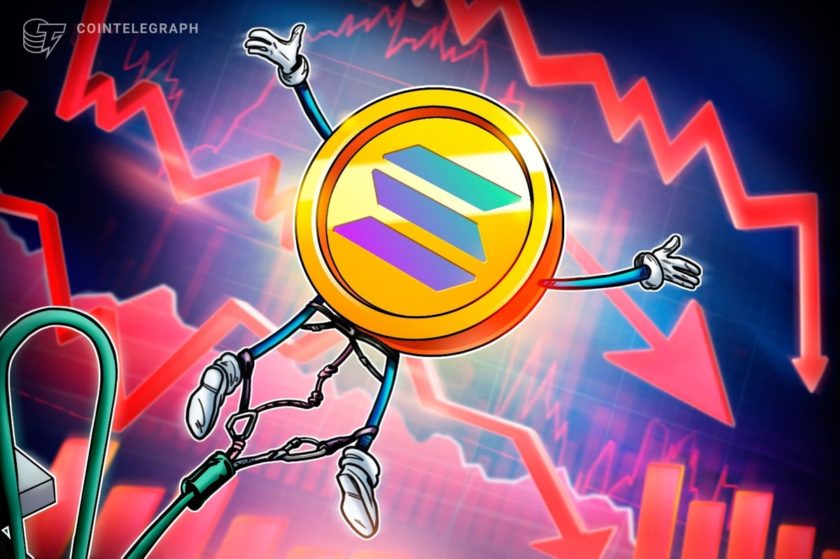In the last bear market, crypto was still in the discovery phase as users were wondering whether blockchain assets are a legitimate long-term trend or just a fad that should’ve been sold at the top. This time, the top industry players, including Microsoft, Google and Reddit, are moving into Web3 products, and top banks such as JP Morgan and Franklin Templeton are testing the waters by settling transactions on-chain.
Bear markets also bring uncertainty to builders. VC investment into Web3 startups has fallen to its lowest since 2020. VCs that were deploying rapidly in the bull market take more time to evaluate projects and weigh valuations before investing. However, bear markets come with an upside. They wash out the short-term arbitrageurs focused on money grabs and take crypto back to its roots — building a decentralized, secure and equitable future.
Here are five steps you can consider to get in shape to deal with the bear market blues and position yourself for what comes after.
Get a clear understanding of your runway
Check your treasury balance and extrapolate your costs for the next 12 months. Token treasury balances are volatile, so you may want to have enough dollar-denominated treasury to cover at least 12 months of cost. Make sure you understand your unit economics clearly and evaluate if your product can acquire new users profitably. Try to keep your burn rate low — review your current expenses and see what areas you can cut costs if it’s not already been done. This will help increase your runway and give you more time to execute your vision. Review your team and make sure you have the right mix of people to execute your vision.
If your project has a token, review the token economics. You can optimize it to conserve value (spending less on inflationary rewards, etc.). Try to get grants and support your runway. If your runway is less than 12 months, then don’t be shy in considering exploring a bridge round.
Talk to your community
Communities are critical as they are the ones that will help you weather the storm. Your community is willing to test your v1 product and give you honest feedback so that you can iterate to PMF. Your community can also help you with business development by introducing you to potential partners and helping you find the right talent.
The kind of community to go after depends on the type of product and the stage of growth. Camille Ricketts, ex-Head of Marketing at Notion, shared a framework, which could be very helpful to follow.
Don’t launch a token if you are still figuring out how to get to PMF. If you have PMF, then tokens could be used to incentivize and encourage fruitful participation of different entities within your ecosystem. An opportune moment to launch your token may be when we are transitioning out of the bear market. Token holders get to see price appreciation as the market turns and your product is gaining wider adoption. This synchronized growth can create a positive feedback loop, driving further market interest. However, launching a token at any time is a decision that has to be seriously contemplated within your team.
Focus on your product’s value proposition
Figure out your product’s core action and get your product in front of users. Bear markets are a good time to release early versions of your product to a small group of beta testers and gather feedback.
If you are striving to hit PMF, it is vital to gather feedback from early adopters, refine your product based on user insights and continually iterate until you achieve a strong product-market fit. On the other hand, if you have already attained PMF, your focus might shift towards scaling efforts such as communicating your value proposition clearly to users and optimizing marketing strategies.
For those aiming to establish a dominant position, it becomes crucial to differentiate your product from competitors, to invest in innovative features and continuously engage with your target market to stay ahead in the ever-evolving landscape.
Get your business model right
In a bear market, it’s best to focus on profitability, reviewing expenses and considering prioritizing investments that can drive profitable growth. Consider introducing premium offerings or testing new pricing strategies to maximize revenue. Don’t be afraid to test what the right price the market is willing to pay.
You should also think about ways to diversify your revenue streams. Many NFT projects like Wassies and Pudgy Penguins are seeing a drop in royalties and exploring alternative sources of revenue, such as hotels and toys.
Revisit your go-to-market strategy
Be very conscious and targeted on how you spend money on marketing. Leverage organic and low cost-marketing strategies as much as possible. This will help you focus your resources on the right partnerships and user adoption initiatives.
Think about what partnerships make sense for your product and who your target users are. Make sure you have a clear understanding of your target users and what their needs are. Identify the right influencers and thought leaders in your space and build relationships with them. This will help you get your story in front of the right people. In Web3, partnerships serve as the network effect.
Lastly, don’t give up. This is the moment to stay true to your vision and remember why you began in the first place. Remember, bear markets may momentarily diminish your spirits, but they are the crucible in which the underlying foundations for revolutionary apps and innovative use cases are forged.
The information provided here is not investment, tax or financial advice. You should consult with a licensed professional for advice concerning your specific situation. The information contained in the column represents the views and opinions of the author alone and does not represent the views or opinions of the author’s employer or any 3rd party affiliated with the author.
Abhishek leads infrastructure, DeFi and non-media investments for Polygon Ventures — a venture fund focusing on Web3 investments.
This article was published through Cointelegraph Innovation Circle, a vetted organization of senior executives and experts in the blockchain technology industry who are building the future through the power of connections, collaboration and thought leadership. Opinions expressed do not necessarily reflect those of Cointelegraph.



